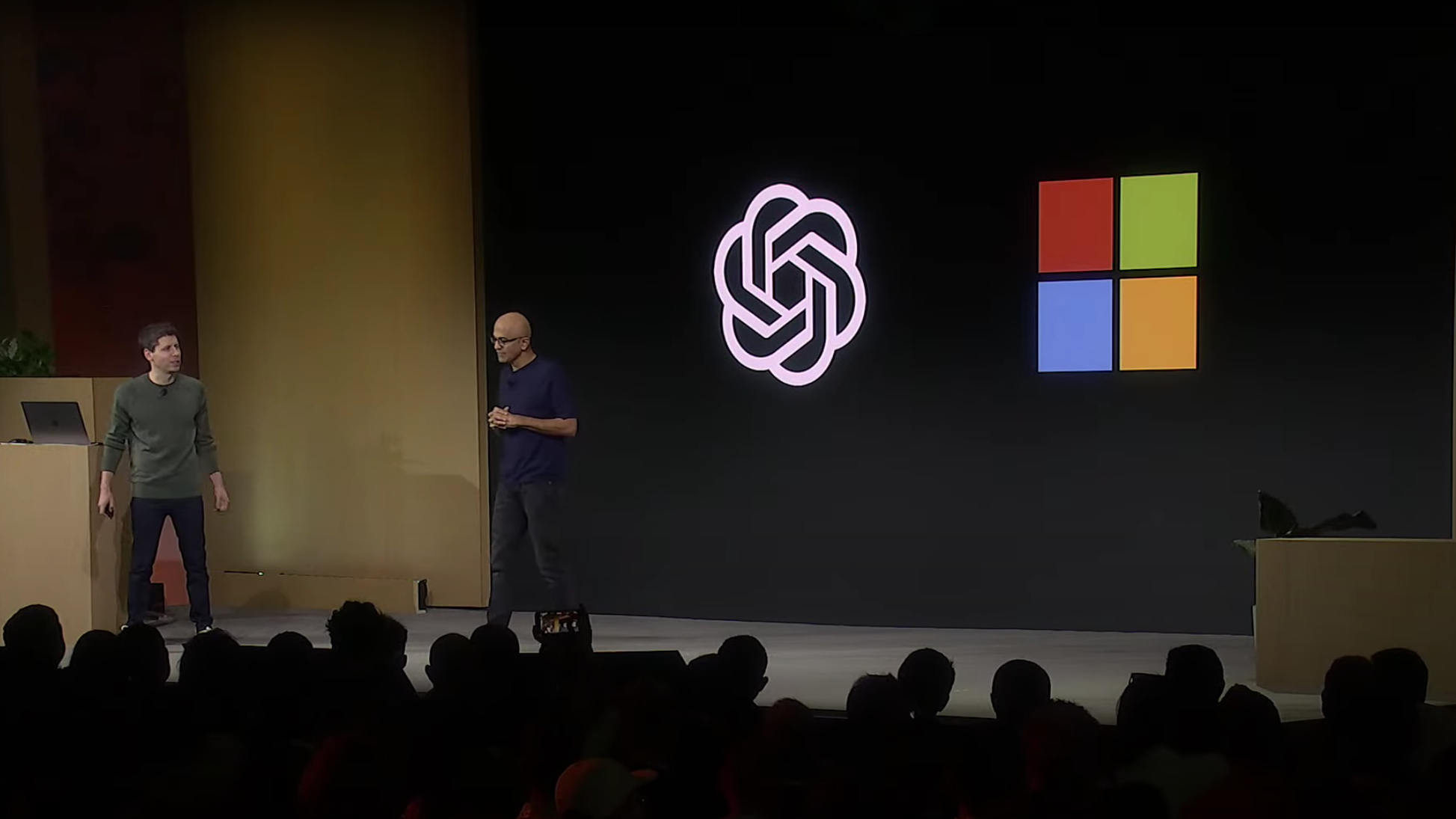After Microsoft invested $10 billion, OpenAI snubs Windows 11 as it releases ChatGPT app first on Mac. “We’re just prioritizing where our users are.”
Windows users will have to wait for a native ChatGPT app as OpenAI prioritizes the Mac.

What you need to know
- OpenAI announced a new native desktop app for ChatGPT today.
- The app was announced exclusively for macOS, with a Windows app coming "later this year."
- Even with Microsoft investing over $10 billion in OpenAI, a Windows app was seemingly not feasible.
- OpenAI says it is prioritizing where its users are, which suggests they are not on Windows.
OpenAI today held a live event where it unveiled several updates for ChatGPT, including GPT-4o which is an updated large language model with enhanced real-time voice capabilities and faster performance. Microsoft and OpenAI share a close partnership, with Microsoft investing over $10 billion in the company and utilizing OpenAI’s technology in its own Copilot services.
Alongside the announcement of GPT-4o, OpenAI announced a brand new ChatGPT app for macOS, built using Apple’s native Mac app platform. Curiously, there was no mention of a Windows app launching alongside the Mac app, and unfortunately it turns out that’s because OpenAI didn’t think it was necessary to launch a Windows app at this time.
In an interview with Ina Fried, OpenAI’s CTO Mira Murati said “we’re just prioritizing where our users are” when asked about why there isn’t a Windows app launching today. That must sting a bit for Microsoft, especially when you consider how the company has been trying to market Windows as the platform for AI developers. Frustratingly, OpenAI says the Windows app for ChatGPT is coming later this year, with no specific timeframe provided.
According to OpenAI, the majority of its users on a desktop operating system are using Mac, even though Windows has a much larger share of the PC market. Windows users aren’t totally left out in the cold, however, as ChatGPT is available as a web app in your browser of choice, but that’s not going to deliver the same native experience as a dedicated app.
There is some hope for Windows users, as OpenAI engineer Javi has mentioned that the company is looking for Windows engineers, hopefully to help build a native ChatGPT app for Windows 11.
Windows has Copilot, it doesn't need a ChatGPT app... right?
Of course, Windows users have access to Microsoft Copilot, which is built-in to all Windows PCs and utilizes OpenAI's GPT magic anyway. While true, I don't see that as a valid reason for OpenAI to not build a native ChatGPT app that it controls. While Copilot and ChatGPT are similar, they are not identical, and Microsoft ultimately controls the GPT experience in Copilot.
What's more, ChatGPT gets access to new OpenAI technology ahead of Windows Copilot. So it would be nice to have a ChatGPT app on Windows so Windows users can take advantage of these advances before Microsoft is able to integrate them into Copilot.
Get the Windows Central Newsletter
All the latest news, reviews, and guides for Windows and Xbox diehards.
Microsoft is holding its annual Build developer conference next week, which will be all about AI. We will likely see Microsoft announce GPT-4o support in Copilot during this event, but that's not really the point. It seems like app developers are often prioritizing new app development on Mac instead of Windows.
Windows Copilot is a webview, powered by Microsoft Edge. It does not use Windows 11's native UI framework, known as WinUI. The ChatGPT app on Mac uses SwiftUI, which is the Mac's native UI platform, and as a result is an app that is fast, fluid, and looks beautiful. Windows Copilot is functional, but you can't call it fast, fluid, or beautiful.

-
taynjack If only Microsoft had a mobile platform... Where A.I. users are. Of course only consumers apparently use A.I. so business'ers don't need it.Reply -
eddieDOTexe This is nothing new. I remember Microsoft snubbing their own mobile OS when they had one by releasing new apps on iPhone/Android first.Reply -
naddy69 As I said here a long time ago, it's going to be hard for MS to push "AI" since they have no consumer products.Reply
"Windows Copilot is a webview, powered by Microsoft Edge. It does not use Windows 11's native UI framework, known as WinUI. The ChatGPT app on Mac uses SwiftUI, which is the Mac's native UI platform, and as a result is an app that is fast, fluid, and looks beautiful. Windows Copilot is functional, but you can't call it fast, fluid, or beautiful."
I wouldn't call anything on Windows 11 "fast, fluid, and looks beautiful." -
alec sander nearly every article I read from windows central has made stupid claims recently. windows built ChatGPT directly into the operating system and has licensed gpt 4 already. so openai is attempting to not compete with MSFT...Reply -
The Werewolf Reply
You're conflating two things: the OS and the development platform. C#/WPF app dev is just as easy (if not moreso) and is more flexible. In fact, with the right theming you can make apps that work and look exactly like MacOS apps (yes, even with a menu bar).naddy69 said:As I said here a long time ago, it's going to be hard for MS to push "AI" since they have no consumer products.
"Windows Copilot is a webview, powered by Microsoft Edge. It does not use Windows 11's native UI framework, known as WinUI. The ChatGPT app on Mac uses SwiftUI, which is the Mac's native UI platform, and as a result is an app that is fast, fluid, and looks beautiful. Windows Copilot is functional, but you can't call it fast, fluid, or beautiful."
I wouldn't call anything on Windows 11 "fast, fluid, and looks beautiful."
In fact, frameworks like AvaloniaUI, MAUI, Project Uno, OpenSilver etc make it possible to have one codebase for crossplatform dev with UI tailored to each platform. Uno and MAUI even use the native controls ON the platform to ensure 100% normal behavior. So in reality, developing on Windows first makes more sense as there are no equivalents on macOS to go the other way.
That being said, you've actually nailed a big problem: that devs want to do web for Windows and are ok doing desktop dev for macOS, which given the hell maintaining said app is trying to keep up with Apple's capricious approval system and random requirement changes... suggests this is more a platform preference than ay real benefit.
And yes, I've done dev on all of the platforms. -
FraJa WPF was well ahead of his time, and unmatched in many ways... The principles are still the ones used today; an influenced many other GUI frameworks. And the current Windows App SDK with WinUI3 is a typical Windows App Framework, it's really good one... Exemple : the Photo app... thousands of pictures smoothly showing in the gallery... and after 15 seconds on the first "start' of the app... that's says it all...Reply
And about WebView2, it's a new hybrid version of the usual EdgeWebView... Also, a nice innovation, Meaning: native access to the OS, the components have a shared memory, and it's veery good and fast (the orignal was already good). And moreover, after times, if you do not use an app using (minimized) it will unload most of the memory and components... Down to 20 -50Mb for New Outlook, or the widgets now very light, devhome, the store...
It's old news:
For OpenAI... Copilot? This the reason, not snubbing or.... why do you imagine a circumvoluted explanation, when there was a much simpler and more logical one? Occam's razor anyone? And there are already dozens of other apps...
